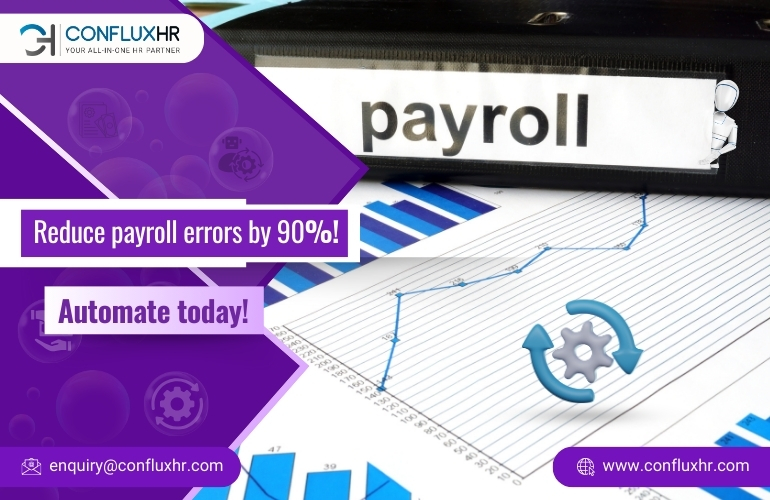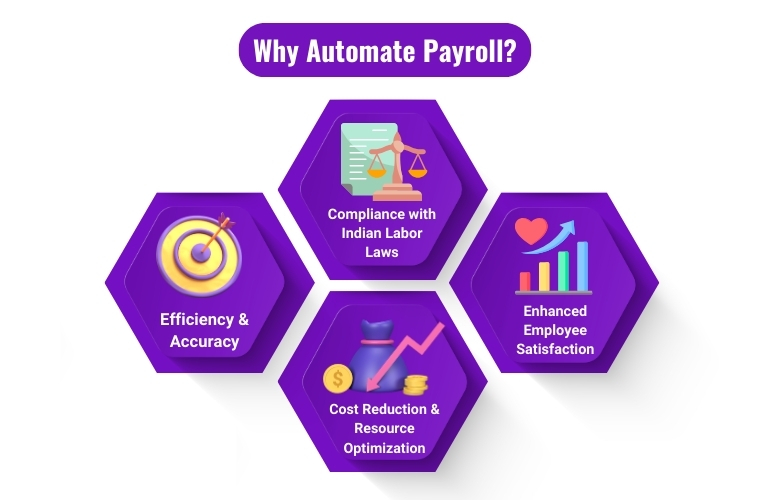Payroll automation has become a game-changer for businesses of all sizes in today’s fast-paced corporate environment. Whether you’re managing a small business or overseeing a multinational corporation, payroll automation tools can significantly streamline your operations. As the payroll landscape in India evolves, embracing these tools is crucial for maintaining efficiency, compliance, and employee satisfaction.
Understanding Payroll Automation
Definition and Core Concepts
Payroll automation refers to the use of software tools and systems to manage and execute payroll processes. These tools automate tasks such as calculating wages, deducting taxes, and distributing payments, reducing the need for manual intervention. Key features often include automated tax calculations, compliance checks, direct deposits, and detailed reporting.
Benefits of Automating Payroll
Automating payroll offers several compelling benefits. It enhances accuracy by minimizing human error, ensures compliance with Indian labor laws and tax regulations, and significantly reduces administrative overhead. Additionally, it improves employee satisfaction by ensuring timely and correct payments, which fosters a positive workplace environment.
Why Automate Payroll?
Efficiency and Accuracy
Manual payroll processing can be time-consuming and error-prone. Payroll automation tools streamline these tasks, reducing the likelihood of mistakes and freeing up valuable time for HR teams to focus on strategic activities.
Compliance with Indian Labor Laws
Navigating the complex web of Indian labor laws and tax regulations can be daunting. Payroll automation tools are designed to stay updated with the latest compliance requirements, helping businesses avoid penalties and maintain adherence to legal standards.
Cost Reduction and Resource Optimization
By automating payroll, companies can cut down on administrative costs and reallocate resources to more value-added activities. This optimization can lead to significant cost savings and a more efficient use of human resources.
Enhanced Employee Satisfaction
Timely and accurate payroll processing directly impacts employee morale. Automation ensures that payments are made correctly and on time, reducing the stress associated with payroll errors and delays.
Payroll Automation for SMEs
Challenges Faced by SMEs
Small and medium-sized enterprises (SMEs) often grapple with limited resources and manpower. Managing compliance with complex tax regulations and labor laws can be overwhelming for smaller businesses. These challenges can lead to inefficiencies and errors in payroll processing.
Benefits of Automation for SMEs
Automating payroll for SMEs can streamline processes and reduce administrative burdens. Affordable solutions tailored for smaller businesses can handle tasks such as tax calculations, compliance checks, and direct deposits, allowing SMEs to focus on growth and strategic initiatives.
Payroll Automation for Mid-Sized Enterprises
Unique Needs of Mid-Sized Businesses
Mid-sized enterprises face the challenge of scaling their payroll systems to accommodate a growing workforce. They require solutions that integrate seamlessly with other systems and provide advanced reporting and analytics.
Benefits of Automation for Mid-Sized Enterprises
For mid-sized businesses, payroll automation improves accuracy, reduces errors, and offers advanced functionalities such as detailed reporting and analytics. This helps in better decision-making and efficient management of payroll processes.
Payroll Automation for Multinationals
Complexities Faced by Multinational Companies
Multinational companies deal with multi-country payroll management, diverse regulations, and varying tax laws. These complexities require a sophisticated approach to payroll automation.
Benefits of Automation for Multinationals
Automation for large organizations offers centralized control and consistency across different regions. Features such as multi-currency support, multi-language interfaces, and advanced compliance management are crucial for global operations.
Implementation Best Practices
Planning and Strategy
Begin by assessing your current payroll processes and setting clear goals for automation. Identify specific needs and areas for improvement to guide your selection of a suitable payroll automation tool.
Choosing the Right Vendor
Evaluate vendors based on their features, support options, and pricing. Ensure that the vendor provides adequate support and training to help your team transition smoothly to the new system.
Integration and Testing
Ensure that the payroll automation solution integrates seamlessly with your existing systems. Conduct thorough testing before full deployment to identify and resolve any issues.
Employee Training and Change Management
Train your staff on the new payroll system to ensure a smooth transition. Manage the change effectively by providing support and addressing any concerns during the implementation phase.
Conclusion
Payroll automation is not just a technological upgrade; it’s a strategic move that can transform how businesses manage their payroll processes. From SMEs to multinationals in India, embracing payroll automation tools can lead to increased efficiency, accuracy, and overall satisfaction. As you consider integrating these tools into your organization, remember that the right solution can make all the difference in optimizing your payroll operations.




